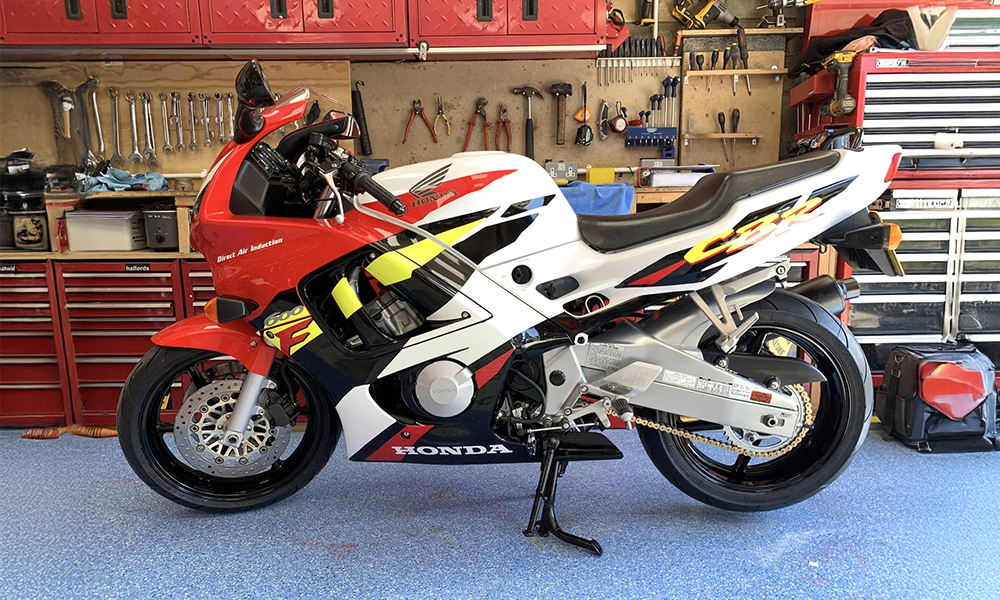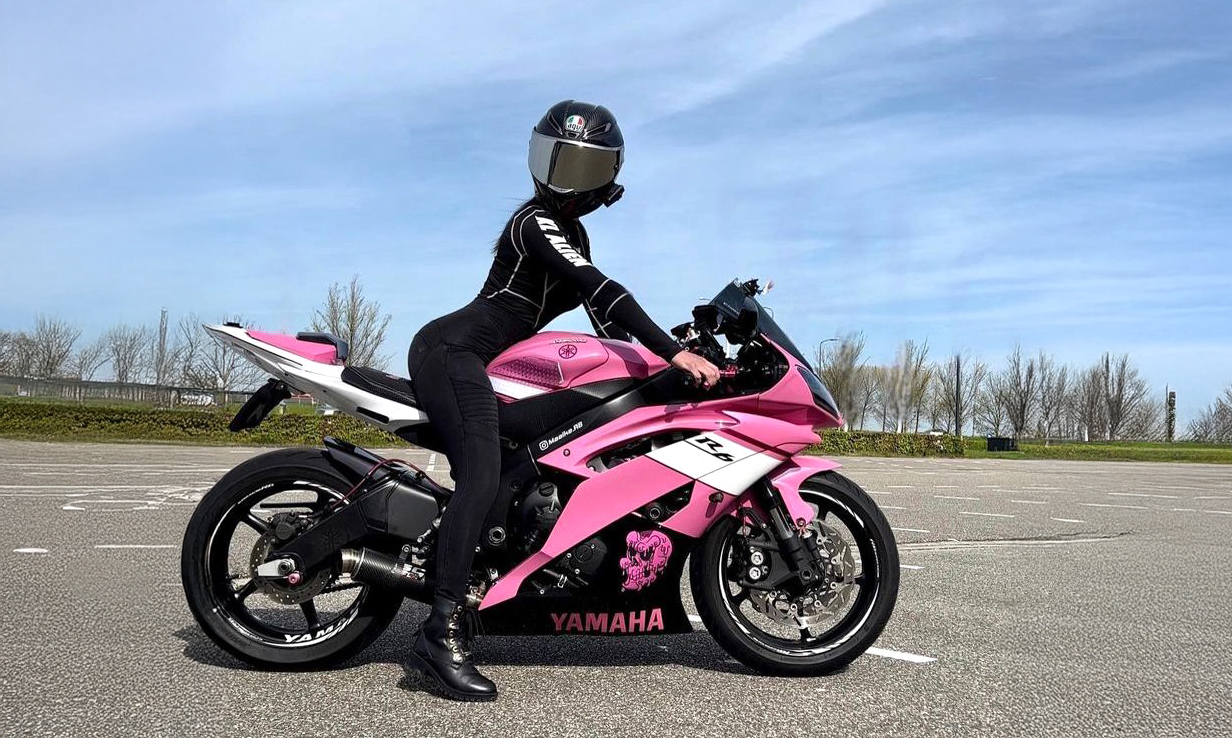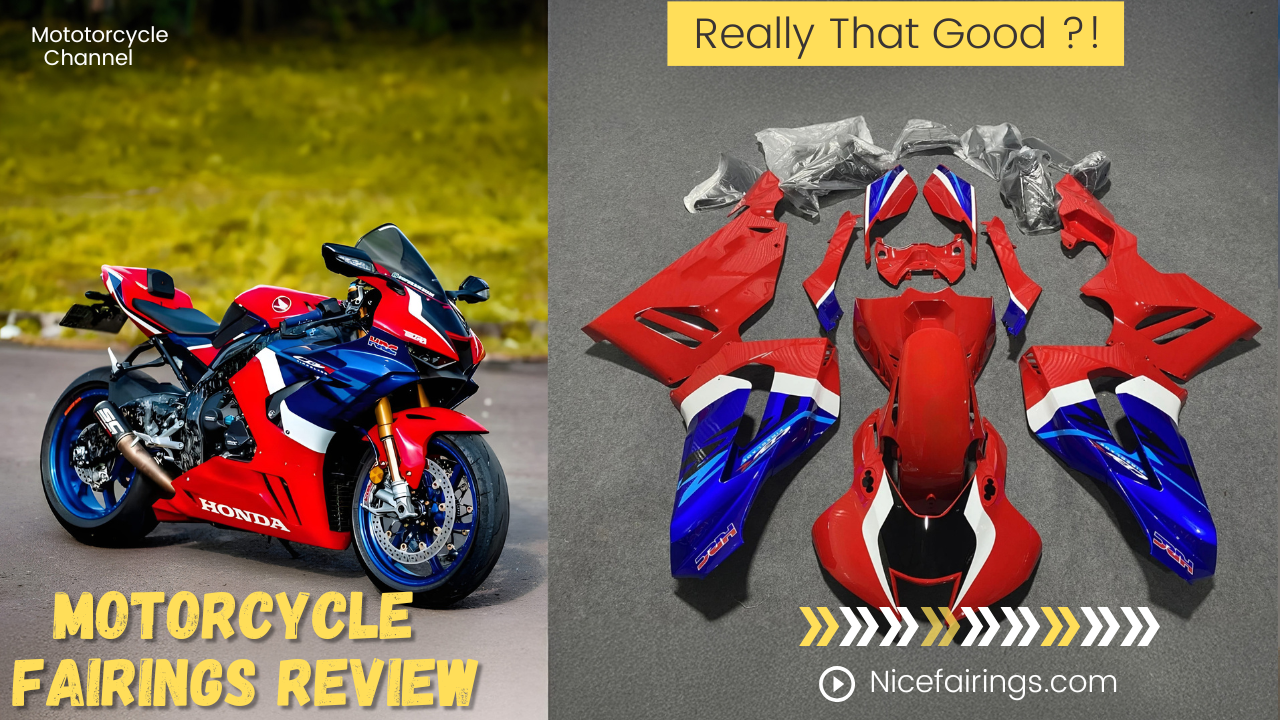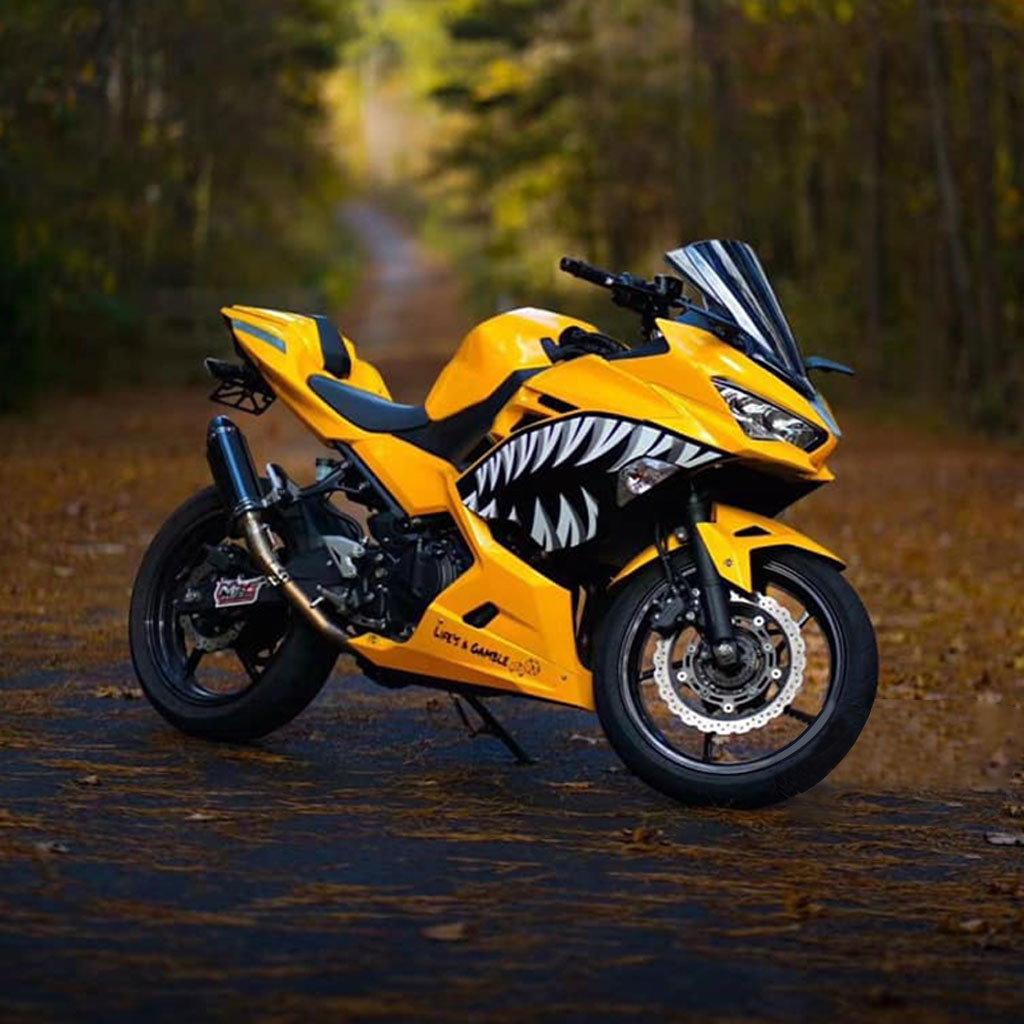How to Choose the Right Used Motorcycle for You

Buying a motorcycle is exciting, but finding a used motorcycle that suits you can feel overwhelming. You want the perfect used motorcycle, but how do you avoid costly mistakes? Many buyers fall into traps like picking the wrong size bike or skipping a proper test ride. Others miss hidden issues like frame damage or worn-out chains. A dirty drivetrain or leaky suspension can also signal poor maintenance. By taking your time and knowing what to look for in used motorcycles, you’ll steer clear of these pitfalls and land a bike that fits your needs and budget.
Key Takeaways
Think about how you ride and your skill level. Pick a bike that fits whether you're new or experienced.
Decide on a budget you can afford. Check average prices and add repair costs to avoid spending too much.
Look up different bike models for how good they are. Read reviews to find bikes that last a long time.
Check the bike carefully before buying. Look for damage, test the engine, and ride it to see if it feels right.
Ask the seller about repairs and upkeep. This helps you know the bike's condition and agree on a fair price.
Know What You Need in a Used Motorcycle
Think About Your Riding Style and Skill Level
Your riding style and skill level matter a lot. Are you new to riding, or have you been riding for years? If you’re a beginner, pick a light bike with a small engine. These bikes are easier to control and less scary for new riders. If you’re experienced, you might want a bike with more power and advanced features that match your skills.
Experienced riders often like bikes with better speed and handling. For example, they may choose bikes that turn smoothly on curvy roads. If you’ve been riding for a while, think about what makes riding fun for you. Whether it’s speed, comfort, or control, pick a bike that fits your style and abilities.
Decide How You’ll Use the Motorcycle
What will you do with your motorcycle? This is important when choosing the right bike. If you’ll ride to work every day, look for a fuel-saving bike with a comfy seat. For long trips or weekend rides, touring bikes with storage and a smooth ride are great. If you love off-road fun, a dirt bike or dual-sport bike is a good choice.
Also, think about features you need. Do you want ABS for safety? Or maybe a windshield to block the wind? Make a list of what’s important to you before shopping. This will help you focus and not feel overwhelmed.
Plan a Budget That Works for You
Having a budget is very important when buying a used bike. Start by checking the average price of the bike you want. Prices can change depending on where you live. For example, bikes in warm places may cost more since they’re used all year. Shopping during the off-season can also save you money.
Don’t forget to include maintenance costs in your budget. A bike in good shape might cost more now but save you money later. Learn about the bike’s history and how much it’s worth. This will help you get a fair price. Stick to your budget and don’t overspend, even if a shiny bike catches your eye!
Research Models and Marketplaces to Buy a Used Motorcycle

Compare Popular Models for Reliability and Performance
When picking a used bike, focus on reliability and performance. Some bikes last longer, while others need repairs often. Check ratings to learn how bikes perform and hold up over time.
Reliability ratings show which bikes break down less often.
Performance ratings explain how bikes handle, speed up, and stop.
Surveys like Consumer Reports rank bikes based on rider opinions. These rankings help you find bikes that are strong and fun to ride. Doing research now can save you trouble later.
Look at Online and Offline Marketplaces for Choices
To find the right bike, check online and offline sellers. Online sites like Cycle Trader or Craigslist let you search from home. You can sort by price, location, or features like ABS brakes.
Offline, visit dealerships or private sellers to see bikes in person. You can check their condition and take test rides. Many people use both methods. They search online first, then visit sellers to decide. This saves time and helps you find the best deal.
Marketplace Type | Benefits |
|---|---|
Online | Big selection, easy sorting, and helpful reviews. |
Offline | See bikes up close, test ride, and negotiate directly. |
Read Reviews and Forums for Owner Opinions
Before buying, read what owners say about their bikes. Reviews and forums are full of useful tips. Riders share what they like and problems they’ve had. Good reviews can make you trust a bike, while bad ones warn you of issues.
Forums let you ask questions about specific models. Want to know if a bike has common problems? Someone likely has the answer. Reviews and forums also reveal hidden costs, like repairs or parts. Learning from other riders can help you make a smart choice.
Inspect and Test Ride Used Motorcycles

Look Closely for Damage and Wear
Before buying a used bike, check its condition carefully. A close look can show problems that may cost you later. Follow these steps to spot issues:
Check the Overall Look: Look for dents, scratches, or rust on the body. These might mean poor care or past crashes.
Match the VIN and History: Make sure the VIN matches the papers. If it doesn’t, there could be problems.
Look at the Engine and Exhaust: Check for oil leaks or heavy rust. A clean engine shows good care.
Test the Clutch and Transmission: Try the clutch lever and check for wear. It should work smoothly.
Check Brakes and Suspension: Press the brake levers to see if they work well. Look for leaks or damage in the suspension.
Inspect Tires and Wheels: Look for cracks or uneven wear on the tires. Spin the wheels to check if they’re straight.
Test the Battery: Look for rust on the battery terminals. A weak battery can cause starting trouble.
Check Lights and Signals: Turn on all lights and signals. Broken lights can make riding unsafe.
Inspect Wires and Connections: Look for broken wires or loose plugs. Fixing electrical problems can be expensive.
Taking time to inspect the bike can save you money later. If you’re unsure, bring a friend who knows bikes or ask a mechanic for help.
Tip: If the bike’s fairings are damaged, you can replace them with Nicefairings to make it look new.

Check the Motorcycle’s History and VIN
Knowing the bike’s history is very important. Start by checking the VIN. This step can show if the bike was stolen, damaged, or in an accident. A clear title means it’s safe to buy.
Here’s why a VIN check helps:
It shows accident history and past owners, giving you a full picture.
A VIN decoder can find hidden problems like mismatched parts.
History reports tell you about the bike’s condition, so you avoid surprises.
You can also check the manufacturer’s website. Enter the VIN to see details like recalls, warranties, and specs. This confirms the bike is real and reliable. Always ask for proof of ownership and a history report from the seller. These papers protect you and ensure the bike has no legal issues.
Test Ride to Check Comfort and Handling
A test ride helps you see how the bike works. Don’t skip this—it’s the best way to check comfort and performance.
Here’s what to notice during the ride:
Handling: Ride through turns and curves. The bike should feel steady and easy to control. If it wobbles, there may be alignment problems.
Comfort: Check the seat and riding position. Are you comfortable? For long rides, comfort is very important.
Braking: Try the brakes at different speeds. They should work fast and quietly.
Acceleration: Speed up and check for strange vibrations. A good engine gives smooth power.
Listen for odd sounds like grinding or rattling during the ride. These noises might mean mechanical issues. If something feels wrong, ask the seller about it.
Note: If the bike doesn’t feel right, keep searching. The perfect used motorcycle is out there. Be patient and keep looking until you find it.
Ask the Right Questions to Secure the Best Deal
Ask About Maintenance Records and Repairs
When buying a used bike, maintenance records show its care history. Ask if the owner kept up with oil changes and brake checks. A well-cared-for bike is less likely to need costly fixes.
Also, ask about big repairs. Has the engine or transmission been fixed? If yes, find out why. Repairs aren’t always bad but can show how the bike was treated. Many repairs might mean it wasn’t cared for properly.
Don’t forget to ask about replacement parts. Were they original or aftermarket? Original parts usually last longer and fit better. If there are no records, that’s a warning sign. You might want to walk away or lower your offer.
Tip: If the seller won’t share records, have a mechanic check the bike first.
Learn About Ownership History and Modifications
The bike’s ownership history can tell you a lot. Ask how long the seller owned it and why they’re selling. A short time owning it might mean problems. A long-term owner upgrading to a new bike likely cared for it well.
Ask how the bike was used. Was it for daily rides, weekend trips, or racing? Each use causes different wear. For example, racing can stress the engine more than casual riding.
Also, ask about modifications. Did they change the exhaust, handlebars, or suspension? Some changes improve performance, but others might hurt safety. For example, an aftermarket exhaust might sound cool but fail emissions tests.
Note: If the bike has many mods, make sure they suit your needs. Don’t pay extra for features you don’t want.
Clear Up Safety and Performance Concerns
Safety and performance are very important when buying a bike. Ask about safety features like ABS brakes or airbags. These can protect you during rides.
Next, ask about performance. How fast is the bike? How does it handle turns and braking? A bike that looks good on paper might not feel right for you. Also, ask about fuel use. A bike that uses too much gas can cost more over time.
Ask the seller if they’ve noticed any problems. Do they hear strange noises or feel vibrations? These could mean hidden issues.
Checklist for Safety and Performance Questions:
Does it have ABS or other safety features?
How does it handle braking, speed, and turns?
Are there any known problems?
These questions help you learn about the bike’s condition. They also help you negotiate a fair price.
Negotiate and Finalize the Deal for Your Used Motorcycle
Tips for Negotiating a Fair Price
Negotiating might seem hard, but it helps you save money. First, research the motorcycle’s market value. Look at websites like Craigslist or eBay. Check what similar bikes are selling for. This will help you know a fair price.
When you start negotiating, don’t ask for the lowest price. Instead, make a fair offer based on your research. Be polite but firm. If the seller counters, stay calm and adjust if needed. Decide what you’re okay giving up to keep the deal fair.
Timing can help too. Buying at the end of the month might get you a discount. Sellers may want to meet their sales goals. Also, having financing ready shows you’re serious. This can make the seller more willing to work with you.
Tip: Look at the total cost, not just monthly payments. This helps you avoid hidden costs and stay within budget.
Compare Asking Price with Blue Book Value
Before agreeing on a price, check the motorcycle’s Blue Book value. This tells you if the asking price is fair. Sellers who know their bike’s worth often set better prices. This makes negotiating easier.
If the price is higher than the Blue Book value, use this to negotiate. Politely explain why a lower price makes sense. If the price is the same or lower, you’re likely getting a good deal. Comparing prices helps you make a smart choice.
Complete Documentation and Payment Securely
After agreeing on a price, finish the paperwork. Create a bill of sale with details like the VIN, price, and signatures. Make sure the title is signed over to you. Keep copies of all documents for your records.
For payment, use a safe method. Cash works, but cashier’s checks or electronic transfers are safer for big amounts. Services like DealNow offer secure transfers to protect both buyer and seller.
Reminder: Always complete the paperwork. It proves you own the bike and avoids future problems.
By following these steps, you’ll feel confident about your purchase. You’ll ride away knowing you made a smart deal.
Buying a used motorcycle doesn’t need to be hard. Follow these steps: know what you need, research bikes, check the bike, and ask smart questions. Take your time and don’t rush. Being patient and careful helps you find the best bike.
Here’s why taking it slow is important:
Doing the paperwork right avoids problems later.
Knowing your needs keeps you focused and ready.
A friend with experience can spot things you might miss.
Tip | Why It Helps |
|---|---|
Read documents | |
Know yourself | Thinking about your needs helps you stay on track. |
Ask for help | Friends with bike knowledge can give useful advice. |
The perfect motorcycle is waiting for you. Be patient, do your research, and enjoy finding your dream bike!
FAQ
How can I find a dependable used motorcycle?
Look for models known to last long. Search online and visit local dealers. Choose bikes with service records and no accident history. Always take a test ride before buying.
How can I tell if the price is fair?
Compare the price to the Blue Book value. Check what similar bikes cost in your area. If it’s too high, use your research to negotiate kindly.
Are aftermarket changes something to worry about?
Yes, some changes might harm safety or performance. Ask why the changes were made. If unsure, have a mechanic check if the bike is safe for you.
Is it okay to buy a bike without riding it first?
No, it’s not a good idea. A test ride helps you feel how the bike handles and performs. If the seller won’t allow it, look for another bike.
What papers do I need when buying a used bike?
You’ll need a signed title, bill of sale, and service records. These prove you own the bike and avoid future problems. Keep copies for your safety.
See Also
Key Advice for Crafting Your Ideal Motorcycle Experience
Selecting Budget-Friendly Motorcycle Fairings for Your Ride
Top Six Stylish Motorcycles for Beginners in 2025
Tips for Ensuring Safety During Your Initial Motorcycle Ride
Guidelines for Choosing the Perfect Fairing Kit for Your Motorcycle

